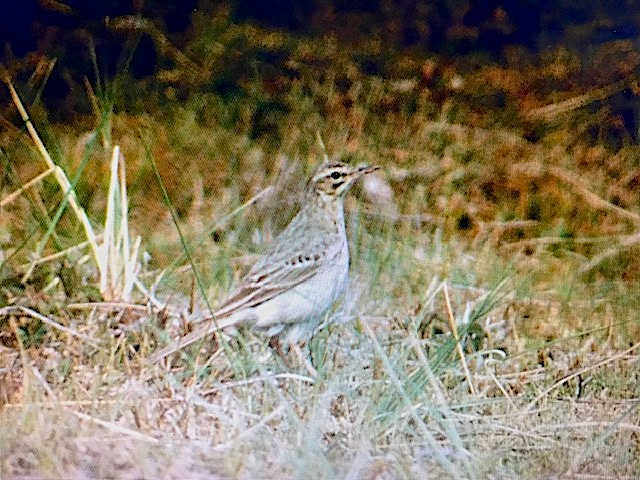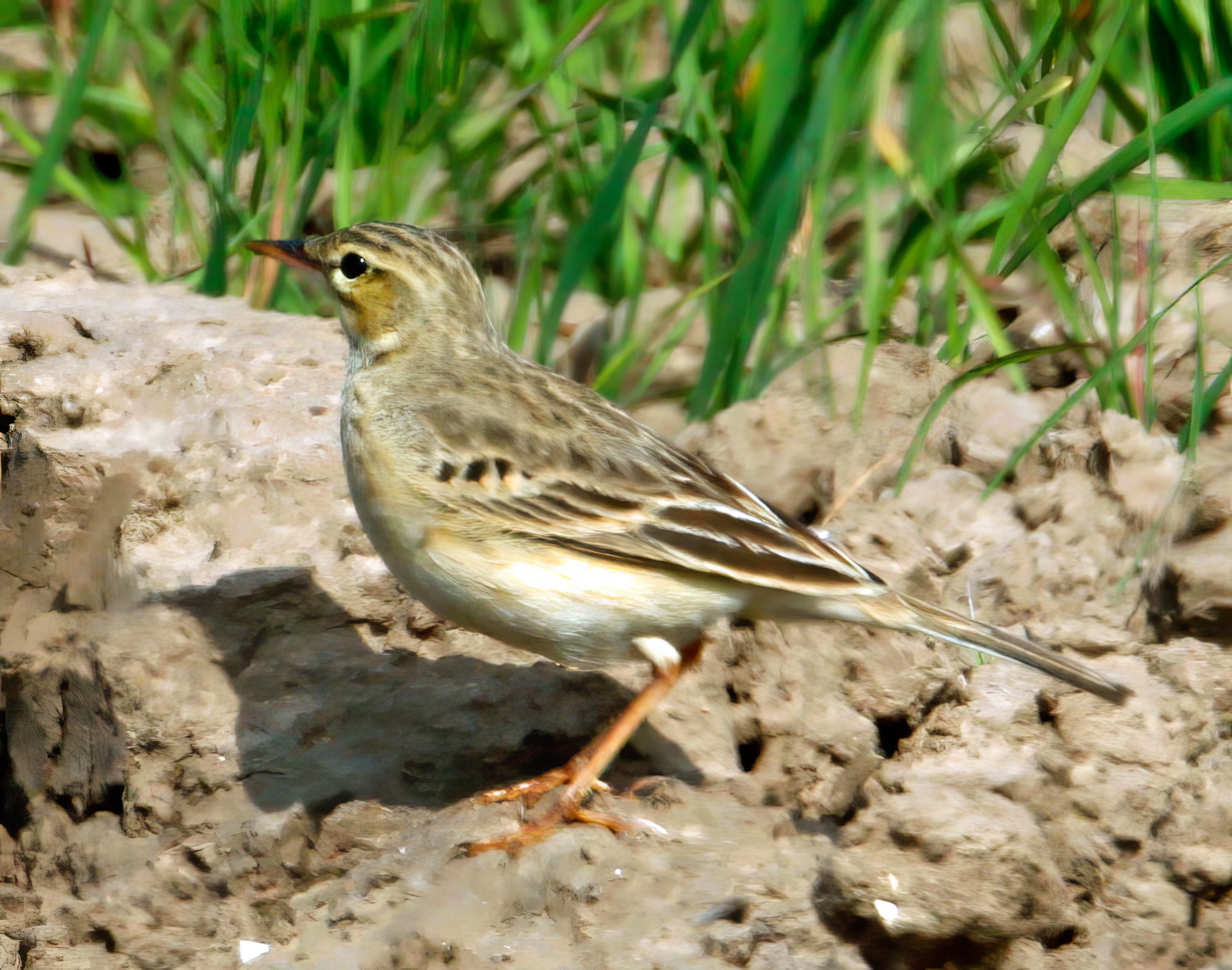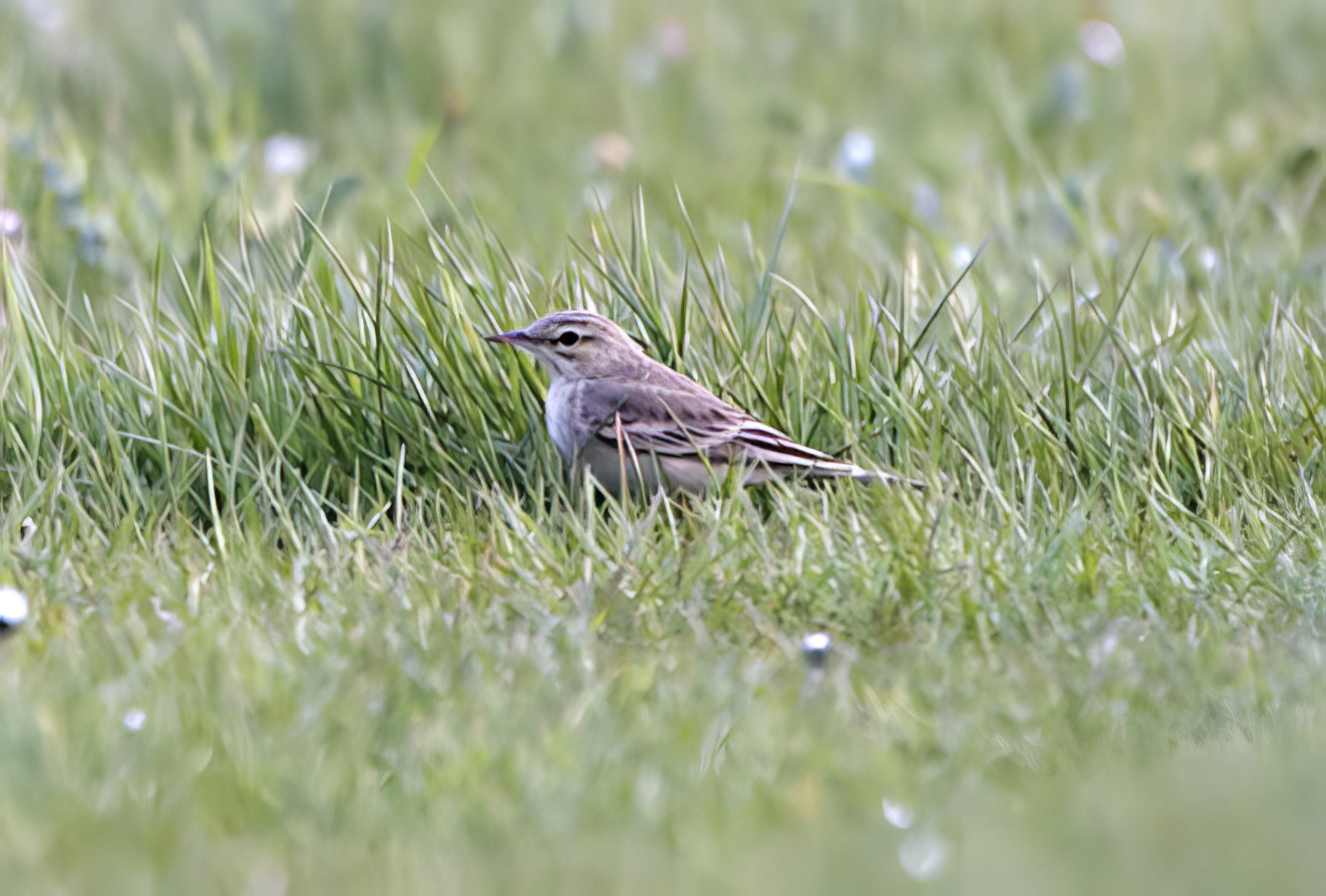Tawny Pipit Anthus campestris



Tawny Pipits: Saltfleetby-Theddlethorpe NNR, May 15th, 1990 (Michael Tarrant); Tetney Lock on April 25th 2011: centre, Michael Tarrant; right, Graham Catley.
This rare pipit has been recorded on 12 occasions, eight in spring (April 25th-June 8th) and four in autumn (September 20th-October 15th). The only inland record was one at the Wisbech Sewage Farm, September 1970. Observers of the bird at Tetney outfall sluice in April 2011 had the double pleasure of watching it along with a nearby trip of seven Dotterel.
Along with Red-throated Pipit, A. cervinus, the species had a period when it was dropped from BBRC consideration (1983-2014) but it was reinstated from 2015. Overall, there have been more than twice the number of Tawny Pipits in Britain compared to Red-throated, with peaks in the 1980s (56, 1983) and 1990s (57, 1992) but the average 2010-2019 was just 6-7 birds per year. Although the species is polytypic and has a vast breeding range from Europe across Asia, populations in West and Central Europe have declined markedly for familiar reasons - from afforestation of open habitats, scrub encroachment and intensification of agriculture. In Central Europe there are only isolated breeding sites, mainly at inland sand dunes, open-cast mines and forest clearings. With only four records since 2000 it remains a difficult bird to see in the county.
| Site | First date | Last date | Count | Notes |
| Donna Nook | 24/05/1970 | 1 | ||
| Wisbech STW | 25/09/1970 | 1 | Only inland record | |
| Donna Nook | 08/05/1975 | 17/05/1975 | 1 | On these two dates only, considered to be the same bird |
| Tetney Haven | 15/10/1975 | 1 | ||
| Donna Nook | 10/05/1980 | 1 | ||
| Gibraltar Point NNR | 10/06/1987 | 1 | ||
| Gibraltar Point NNR | 13/05/1990 | 1 | ||
| Saltfleetby-Theddlethorpe Dunes NNR | 15/05/1990 | 1 | Adult, photographed. Flushed by dogs, flew off and not seen again. | |
| Gibraltar Point NNR | 29/05/1993 | 1 | ||
| Saltfleetby-Theddlethorpe NNR | 20/09/2000 | 21/09/2000 | 1 | On the foreshore |
| Garthorpe | 30/09/2001 | 03/10/2021 | 1 | |
| Tetney Lock | 25/04/2011 | 28/04/2011 | 1 | |
| Howden's Pullover, Saltfleet | 08/06/2014 | 1 |
Finder’s report: Tawny Pipit at Donna Nook, May 24th, 1970, first county record.
by S. Lorand
Note: this account is based on the original BBRC submission. The RC statistics show that 26 records of Tawny Pipits were accepted in 1970. Five were during late May-early June, including the northernmost ever recorded in Britain, on Whalsay, and the rest were late August-late October. The pattern of dates and counties was similar to that of previous years. The period 1970-2000 was the boom time for this species with a peak of 57 in 1992. The Lincolnshire record has all but dried up with just four in the period 2000-2021.
Circumstances
At 10.10hr. on May 24th, I was confronted by a large, pale pipit in an area of sand dunes where long grass was interspersed with bare sandy patches. From about 25 yd. range and with the sun behind me, I unhesitatingly identified the bird as a Tawny pipit and through 10x50 binoculars I was able to examine the bird at rest for 3-4 seconds before it flew away. It was facing me and slightly to one side. I had seen several scores abroad, both adults and juveniles, mainly in the Camargue and in Spain up to August 1969, and also about a dozen Richard’s Pipits up to November 1969.
When the bird took off, reaching a height of about 80 ft. over the beach, it flew in a series of long undulations much in the manner of a Flava wagtail. Gradually heading south, the bird frequently hesitated and almost hovered over the dunes, then followed several long sweeps the bird landed in an area of rough grassland about a quarter of a mile away. The bird remained silent throughout. By the time I had notified G. K. Brown and R. Lorand, and we had reached the spot where it had landed some 20-25 minutes had elapsed. Despite a thorough search no trace of the bird was found. Most of the habitat at Donna Nook, i.e., rough grass, sand dunes, and marsh bordered by farmland is ideal for pipits.
Description
General appearance – no other birds were present for comparison though I estimated the size as comparable to an Oenanthe Wheatear. The general stance was fairly upright, though less erect than Richard’s Pipit, while the bill was less heavy and the legs shorter than Richard’s. On the ground I could not see the tail clearly. Overall, the bird was quite slender and reminiscent of a wagtail rather than a pipit.
Head and upperparts – a broad, creamy supercilium was distinctive, also some streaking on the crown although I could not determine the extent of the streaks as the nape and mantle were not seen clearly. Upperpart colouration in general was sandy-grey, slightly darker on the upperparts and more so on the primaries which were browner with pale leading edges. The blackish centres to the median coverts were particularly noticeable. As the bird rose it showed white outer tail feathers and, on a side view, the tail was distinctly shorter than a Richard’s although the body was slenderer with a tapering effect towards the tail.
Underparts – a clear sandy-grey apart from a slight amount of streaking on the sides of the breast.
Bare parts – bill dark, brownish and the legs were pale, fleshy-yellow.

